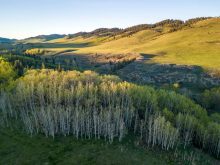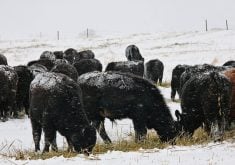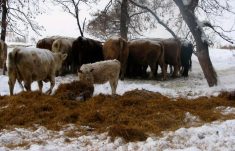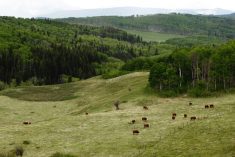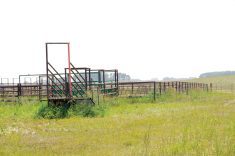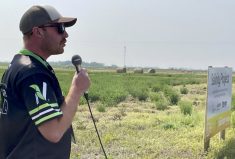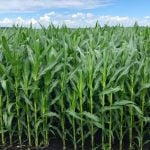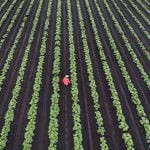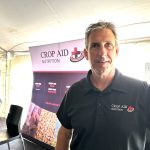Fertilizer and fuel prices got you down? If you have unproductive pasture, the high cost of a total redo may have you unsure of what to do.
But there are low-cost possibilities, says a longtime forage extension specialist.
“Everything is an option when it comes to pasture rejuvenation,” said Grant Lastiwka.
Read Also
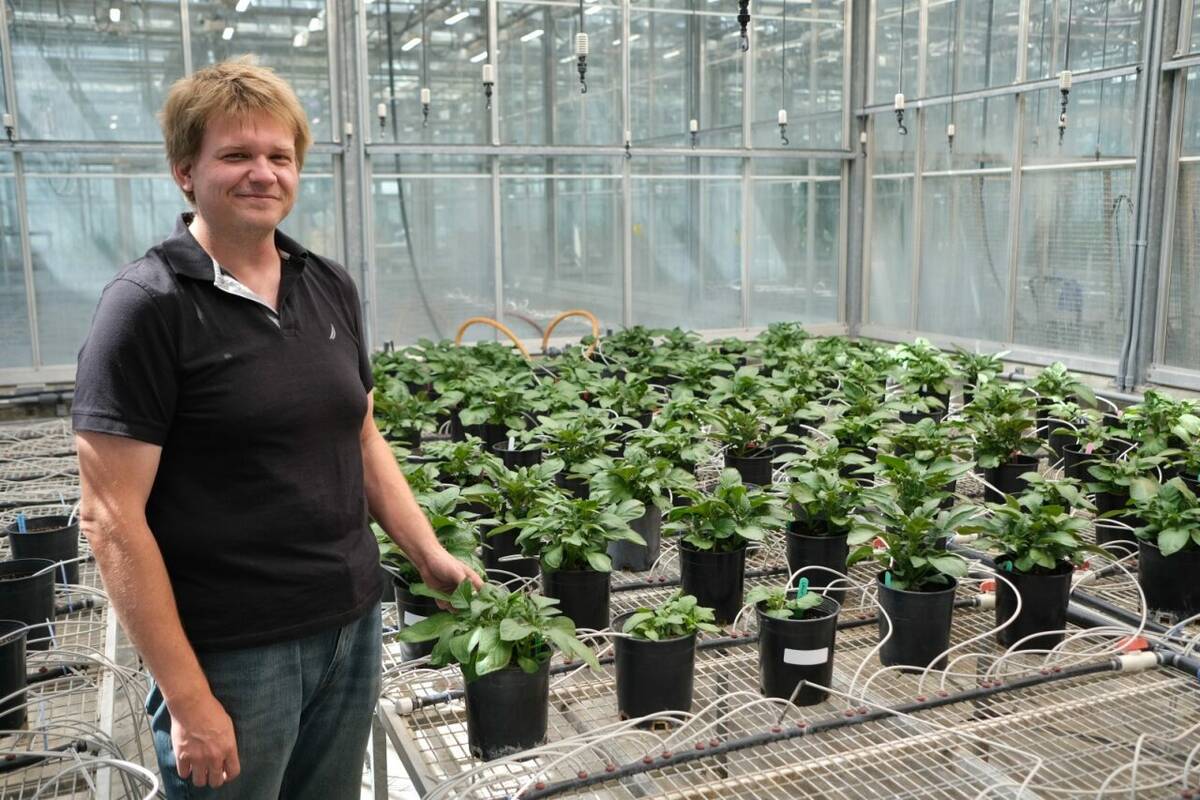
Hail research hopes to benefit potato growers
Alberta research scientist measures hail storm and heat dome affects on potato crops
One of the first things he does to see whether or not a pasture needs rejuvenating is to look at what species are present.
“If I don’t have the right species to begin with, then I strongly consider what my choices might be.”
But no matter what option you choose, grazing management needs to be top of mind, said Lastiwka.
“The key for understanding grazing management is what goes in one end of a cow, the majority comes back out, onto the landscape,” he said. “The more we can manage land with animals and putting the nutrients back to where it came from, the more resilient of a pasture stand we’ll have.”
Mind the young ’uns
Another thing to keep in mind is that pastures are composed of perennial plants and ones, such as grass, tiller as they grow.
These tillers are “baby plants” and live for more than one growing year.
“They start growth in the fall — with that understanding, you look at the picture a little differently,” he said.
Protecting those tillers is key but the old adage, ‘One day in the spring costs you three days in the fall,’ is both true and untrue, according to Lastiwka.
“In well-managed grazing systems, we are going to start grazing a little too soon, and finish a grazing cycle a little too late, because on average it’s pretty good.”
In the spring it’s important to let the plant reach the three-leaf stage before it is grazed.
“In a biodiverse system, strengths need to be carefully worked with and the three-leaf stage of growth (or further) in the spring is a telltale sign that a plant has recovered nutrients that it used in the winter to survive,” said Lastiwka.
So that three-leaf stage is a sign that plant is ready to be grazed. By grazing lightly at that time, the plant will shift from putting up seed heads to putting out more tillers — and that eventually equates to more plants.
In fall, it is important to remember the plant is setting itself up for next year’s growth by setting tillers.
“Tiller buds are being formed which is going to determine next year’s yield,” said Lastiwka.
A good rule of thumb is to leave 2-1/2 leaves per tiller.
That can set you up for a “feast” next season but “if the cattle are allowed to graze and pick it down to 1-1/2 leaves per tiller, famine,” he said.
“The writing is on the wall, based on the understanding of plant physiology and how they grow.”
Seeding the future
Sod seeding is another option “if the right species are there.”
Soil test first though, so you know if there is an adequate nutrient level prior to seeding, he said.
“Just so you’re not deficient, to allow those seedlings to be more aggressive.”
Seeding into sod, though, requires correct timing — preferably in spring when the ground is first able to be worked. This allows the new seeds to take advantage of existing moisture.
“Use a legume,” Lastiwka recommended. “A legume is a ‘meaty’ little seed that can get into the soil, make contact with the soil, and hopefully could be the biggest change to the system.”
Because a legume seed like an alfalfa does not have a hull, it’s able to get growing quicker, fixes, nitrogen, boosts forage quality and “adds risk adverseness for a drought.”
Using a glyphosate suppression prior to seeding might be needed.
“Use a low rate to set the stand back,” said Lastiwka. “Doing so buys a bit of time to allow for the brand new seedling a ‘catch-up’ period to existing plants.”
A hard graze prior to seeding can also work.
“At times a hard graze might not work if the stand is well managed,” he said. “When people are managing a stand well, that stand can be resilient. Trying to change species in a stand where those plants have quite a bit of competition below ground, from well-intact root systems and the vigour that is in the plants, can be a challenge.”
Another method is to use a bovine seeding rig — mix legume seed into loose mineral, and let the cows seed via their manure.
“A lot of the legume seeds will travel through a cow, more so than grass,” said Lastiwka.
However, new plants will only appear in cow pats and establishing large amounts of legumes takes quite a bit of time. However, once established (deferring grazing is needed here), they will self-seed.
Broadcasting seed and letting the cattle work it in with their hoofs is another reseeding option.
“In early spring this works really well when the soil is a bit moist with stockpiled forage,” he said.
As the stockpiled forage starts to green up, the cattle graze close to the ground surface. Using a little higher stock density creates more hoof action to press seeds into the soil.
“This has varied success based on moisture and time,” said Lastiwka.
With any of the methods used, it’s important to remember new seedlings are competing with existing plants, he added.
“It’s timing. It’s getting off that stand to allow the seedlings to come. It’s monitoring. With hope the moisture timing is suitable that once the seedlings start coming, they have the chance of continuing to grow and having enough moisture to be able to compete with existing roots and plants.”
And no matter what method you use, patience is required.
“Trying to bring a pasture back when it’s overgrazed, or a low degree of vigour is a challenging time. It doesn’t happen overnight,” said Lastiwka. “Try to get some legumes added into those stands really ups the game and the productivity of land.”




